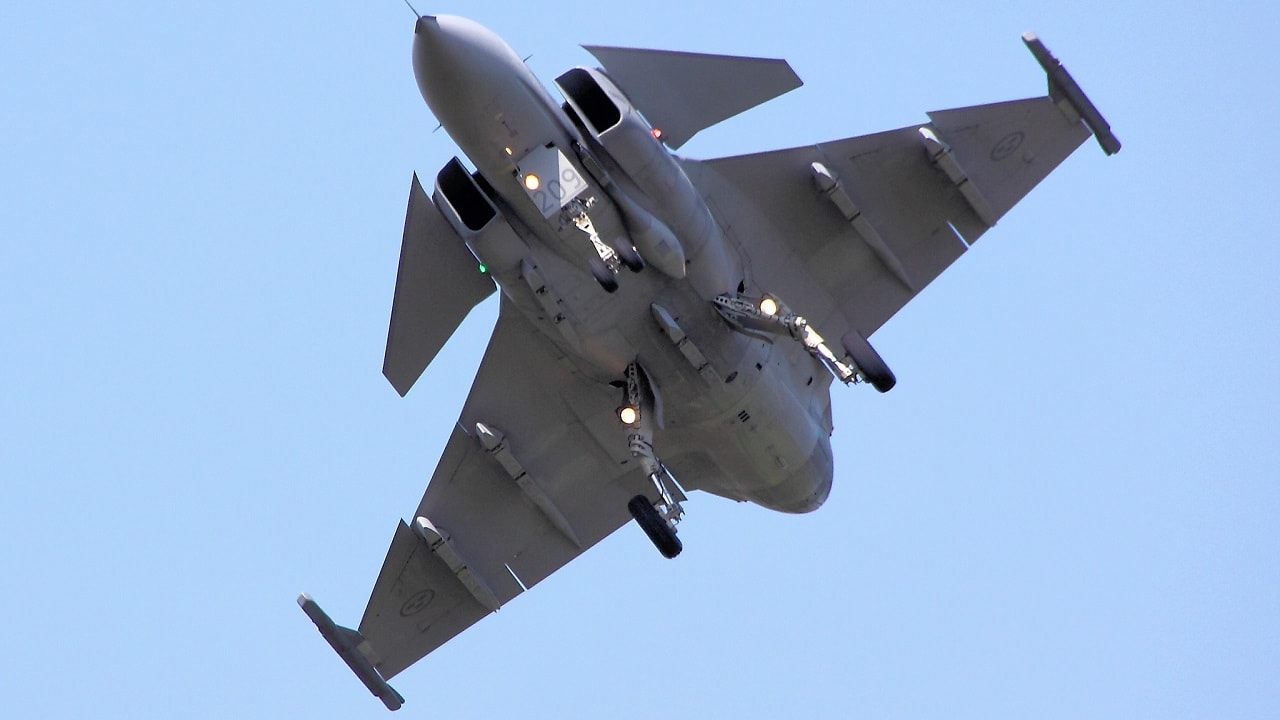Sweden planned for the Saab’s JAS 39 Gripen fighter jet to be a big hit overseas. This airplane has not completely lived up to its expectations in the export market. The airplane has had mixed success in foreign sales this year. Brazil is a customer, but Canada is not – as the Canadians chose the F-35 over the JAS 39 Gripen in a competition. The Gripen is a fourth-generation fighter that has become the quality choice for second-tier air forces around the world, but Saab wants the Gripen to be picked more by top-tier countries.
Gripen Has a Dark Side in Past Acquisitions
One of the reasons for sluggish sales could be that the Saab Gripen has been involved with various bribery and corruption allegations during sales transactions to South Africa and Brazil. While these accusations happened years ago and some situations involved the suppliers and not Saab itself, it does cast something of a shadow over international sales.
Brazil Is Enamored with Gripens
Brazil is still a Gripen customer despite the scandal involving the administration of Luiz Inacio Lula da Silva. This spring Brazil ordered four additional Gripens in addition to the 36 it bought in 2014 with a $4.7 billion agreement. The Brazilians may even order 30 more Gripens in the future. The batch of four may cost Brazil $60 million each. If they order the additional 30 fighters, the price could go up to at least $1.8 billion to make for one of the most expensive arms deals in South American history.
Loss to F-35 in Canada Hurt
Brazil’s continued purchase is good for Saab, but the real prize would have been a sale to Canada to replace its CF-18s. The Gripen was a finalist in a fighter competition against the F-35, but the Lockheed Martin Lightning II was the eventual victor, handing Saab a defeat in a potential deal with a major NATO partner. Canada may eventually buy as many as 88 F-35s if a final agreement can be reached.
JAS 39: It Still Has Strong Specs
The Gripen comes in the ‘C’ and ‘E’ series, and both need upgrades to make the aircraft relevant over the next decade. The E model is bigger than the C and it holds more fuel. The E also has a bigger General Electric engine. The Gripen C can carry four Meteor air-to-air missiles, while the Gripen E can carry seven. Currently, the Gripen C can reach a speed of MACH 2 with a Volvo turbofan engine. Its ceiling is 50,000 feet and it has a range of 2,000 miles. The Czech Republic, Hungary, and Thailand operate the multi-role fighter. Again, these are not usually considered top-tier air forces.
Price Should Be Right
What can the Gripen do to improve its overseas sales? The lack of full stealth capability makes it difficult to compete with the F-35. For a fourth-generation-plus airplane, a price of around $60 million should not be the issue. The price point is affordable for smaller air forces around the globe. Plus, Sweden and Saab allow for a degree of technology transfer and the ability for countries that purchase it to make some of the Gripen parts indigenously.
Gripen Has Not Seen Combat
One major problem is that the Gripen is not combat-proven like the F-16. The F-16 is also affordable and has a sterling record in conflicts such as Operation Desert Storm and over Afghanistan and Iraq after 9/11. This means that countries that do not live in dangerous neighborhoods such as Brazil can order the Gripen and not worry about its lack of a combat record, but larger air forces that must be concerned with Russia or China may opt for the F-16 instead.
The Gripen is a quality choice despite the corruption accusations and lack of war experience. It is affordable and high-performing. Losing the contract in Canada to the F-35 stung and its lack of full stealth characteristics make it a cut below the Lightning II. The Gripen can still compete in the export market – it just may not be the first choice for air forces that face major threats.
Now serving as 1945’s Defense and National Security Editor, Brent M. Eastwood, PhD, is the author of Humans, Machines, and Data: Future Trends in Warfare. He is an Emerging Threats expert and former U.S. Army Infantry officer. You can follow him on Twitter @BMEastwood.

